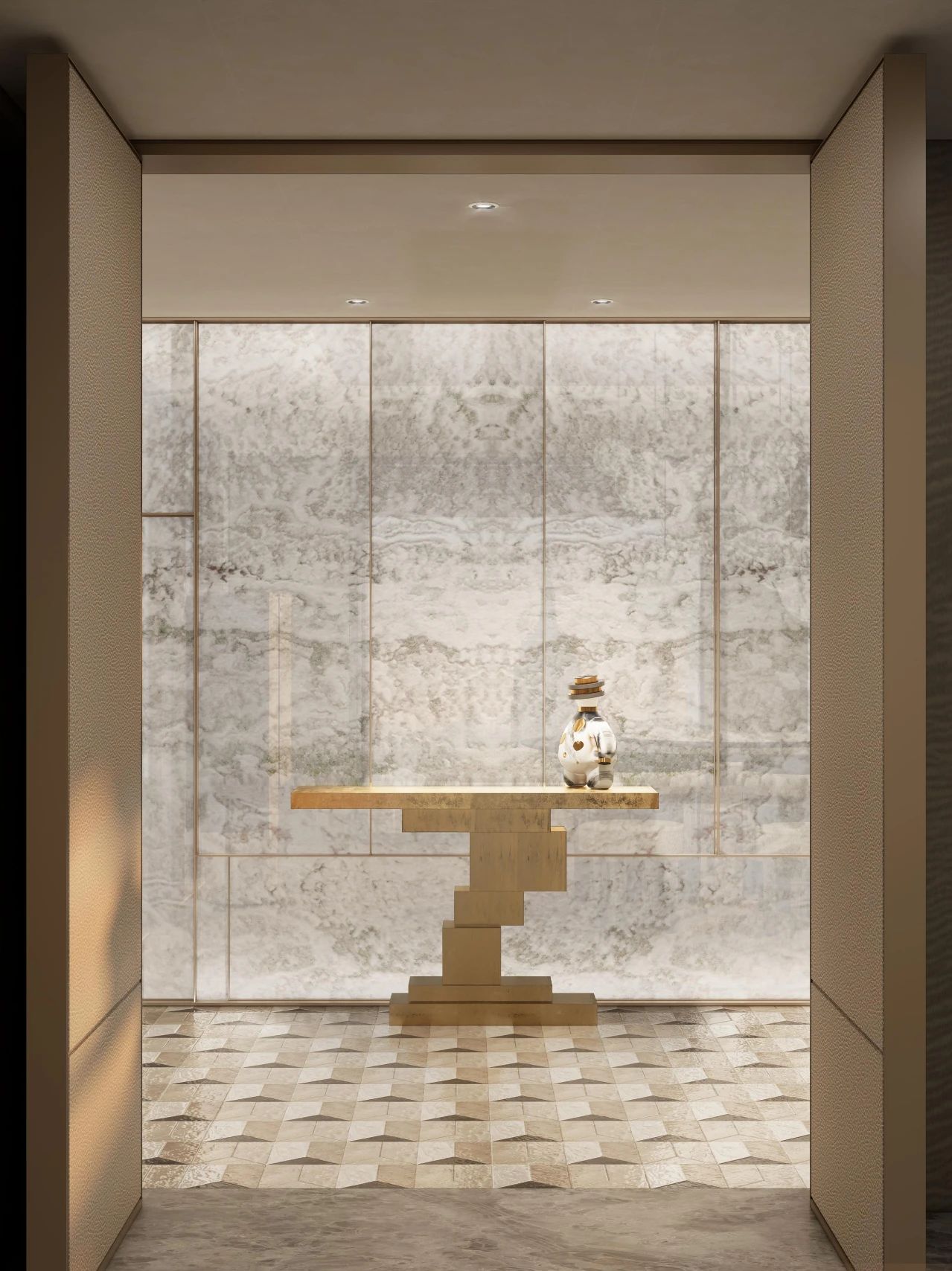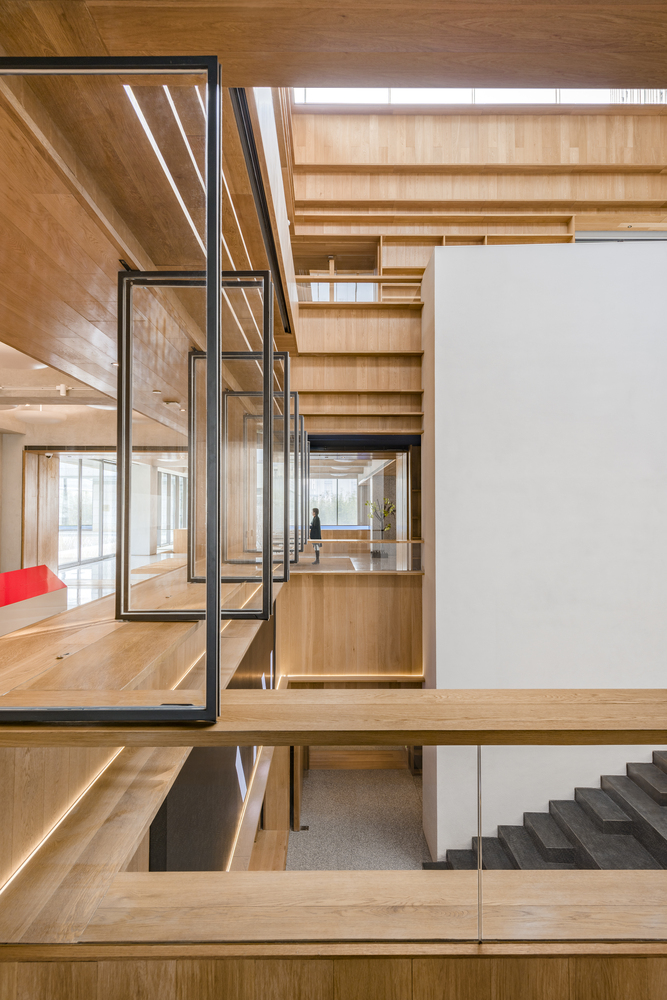Stable in West Flanders Studio Farris Architects
2016-05-26 09:00
© Koen Van Damme
柯恩·范·达姆
_lr.jpg)

架构师提供的文本描述。法里斯建筑师工作室把一个小谷仓改造成一个有几座建筑的农场建筑群的一部分,变成了一个有会议室、图书馆、办公桌和休息/阅读区的办公空间。
Text description provided by the architects. Studio Farris Architects transformed a small barn, part of a farm complex with several buildings, into an office space with meeting room, library, office desks and a resting/reading area.
© Koen Van Damme
柯恩·范·达姆
_lr.jpg)

业主希望有一个小办公室与他的房子分开,这样他就可以有时在家工作。马厩不再使用了,所以他决定用它作为他的家庭办公室.
The owner wanted to have a small office detached from his house so he would be able to work from home at times. The stable was no more in use so he decided to use it as his home-office.
最初的马厩可以追溯到20世纪初,由两层的几间小房间组成。随着他们的翻新,建筑师们希望通过增强对建筑整体形态的感知来改变这个零散的空间。所以他们把房间和一楼都拆了。在这个外面的砖包里,他们用混凝土做了一个内部的信封。一个新的“盒子”与平静的气氛被设计和插入到原来的卷。此外,这种箱内系统允许提高能源效率和避免任何化学反应与硫酸盐在地面和墙壁的原始农场。
The original stable, dating back to the early 1900s, was composed of several small rooms on two floors. With their renovation, the architects wanted to transform this fragmented space by enhancing the perception of the total form of the building. So they completely emptied it by demolishing the rooms and the first floor. Within this outer brick envelope, they created an inner one made out of concrete. A new “box” with a serene atmosphere was designed and inserted into the original volume. Also,this box-in-box system allows to improve energy efficiency and avoid any chemical reactions with sulphates in the ground and walls of the original farm.
© Koen Van Damme
柯恩·范·达姆
_lr.jpg)

为了响应客户的功能需求,建筑师决定设计一个独立的家具对象,它可以在不阻塞视图或改变对整个体积的感知的情况下分割空间。
In order to respond to the functional requirements from the client, the architects decided to design an autonomous furniture object that could divide the space without blocking views nor altering the perception of the whole volume.


这个由层层堆叠的木梁组成的物体,把这个空间变成了一个非常实用的办公室。木横梁顶上是一个小的共用工作区,有两张桌子。在下面创建了一个会议区域,可以看到风景。堆叠的横梁变成了图书馆,书架,储藏,休息和阅读的角落。
This object, made out of layers of stacked timber beams, transforms the space into a very functional office. The wooden beams top out to a small shared work area with two desks. A meeting area is created below with a view onto the landscape. The stacked beams become library, bookshelves, storage and resting and reading corners.
© Koen Van Damme
柯恩·范·达姆
_lr.jpg)

这些横梁以这种特殊的方式堆放在一起,形成一个楼梯,可以爬到上面的工作空间,并且可以很容易地到达每一层的不同的栏杆。
The beams were stacked in this particular way to create a staircase to climb to the upper workspace, and can easily reach the different bars on each level.
© Koen Van Damme
柯恩·范·达姆
_lr.jpg)

堆叠木夹层可被移除,从而使建筑自由和灵活,以容纳其他对象和内部。
The stacked wood mezzanine can be removed, thus making the building free and flexible to contain other objects and interiors.
© Koen Van Damme
柯恩·范·达姆
_lr.jpg)

根据方案需要,恢复了原来的外观,创造了新的空缺。额外的窗户和天窗充分利用自然日光。一扇大的滑动玻璃门向外打开了内部。
The original façade was restored and new openings were created, responding to programmatic needs. Extra windows and skylight take full advantage of natural daylight. A large sliding glass door opens up the interior to the outside.
© Koen Van Damme
柯恩·范·达姆
_lr.jpg)

_lr.jpg)

_lr.jpg)

_lr.jpg)

_lr.jpg)

_lr.jpg)

_lr.jpg)

_lr.jpg)

_lr.jpg)

_lr.jpg)

_lr.jpg)

_lr.jpg)

_lr.jpg)

_lr.jpg)

_lr.jpg)

_lr.jpg)

_lr.jpg)

_lr.jpg)

_lr.jpg)

_lr.jpg)







Architects Studio Farris Architects
Location West Flanders, Belgium
Category Adaptive Reuse
Area 100.0 sqm
Project Year 2016
Photographs Koen Van Damme































